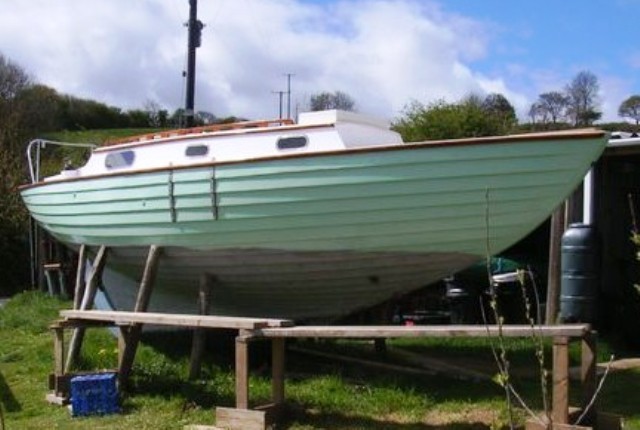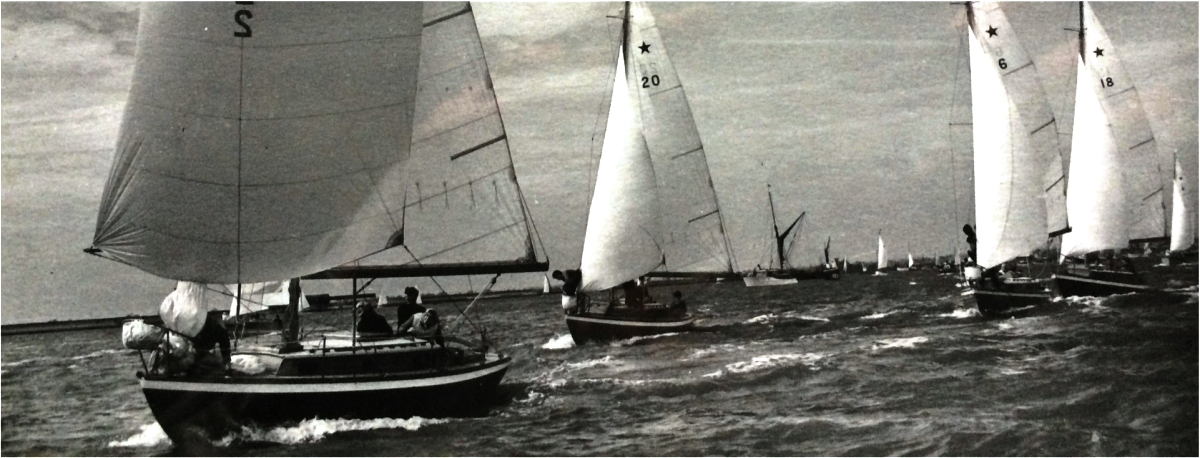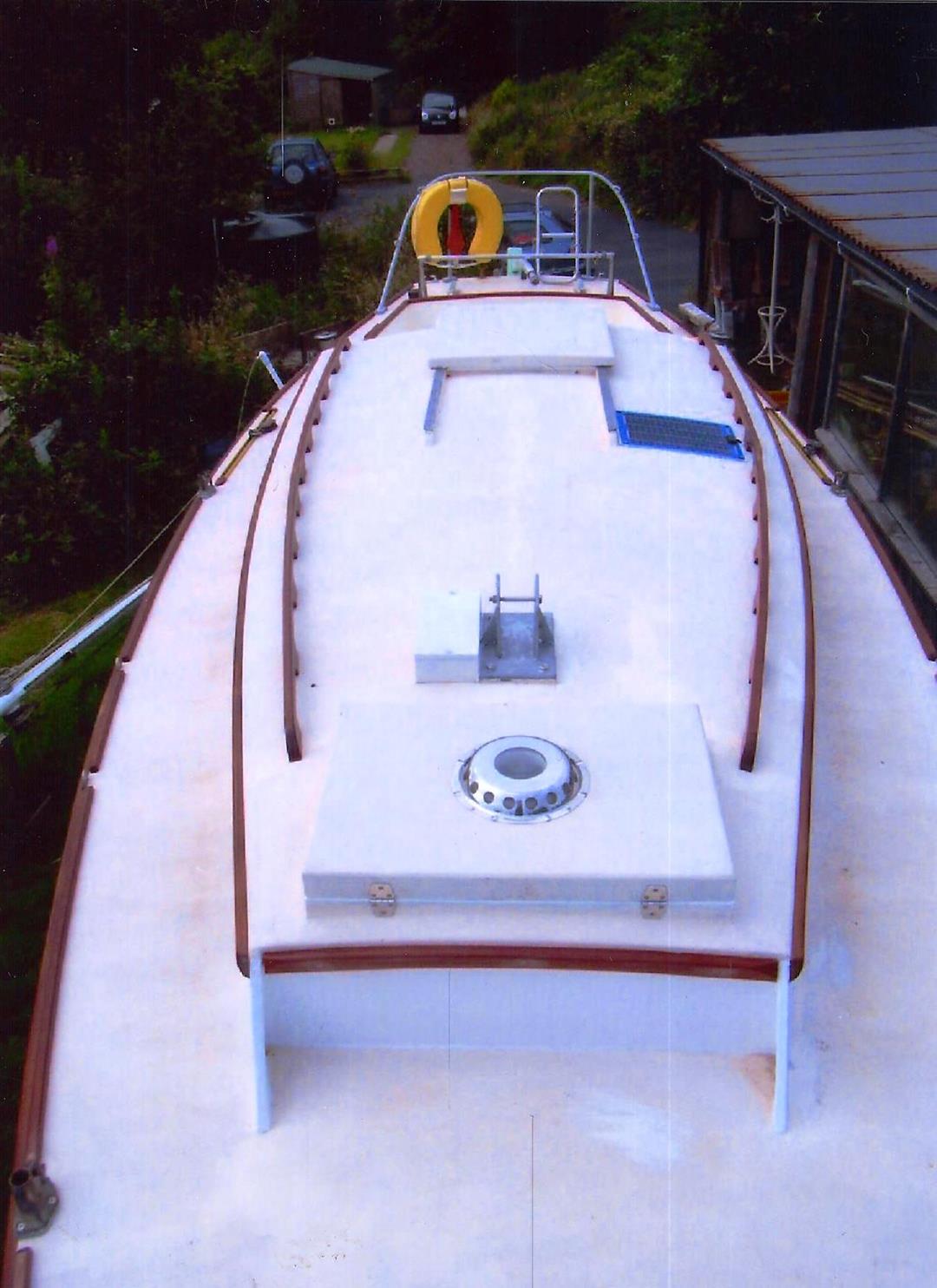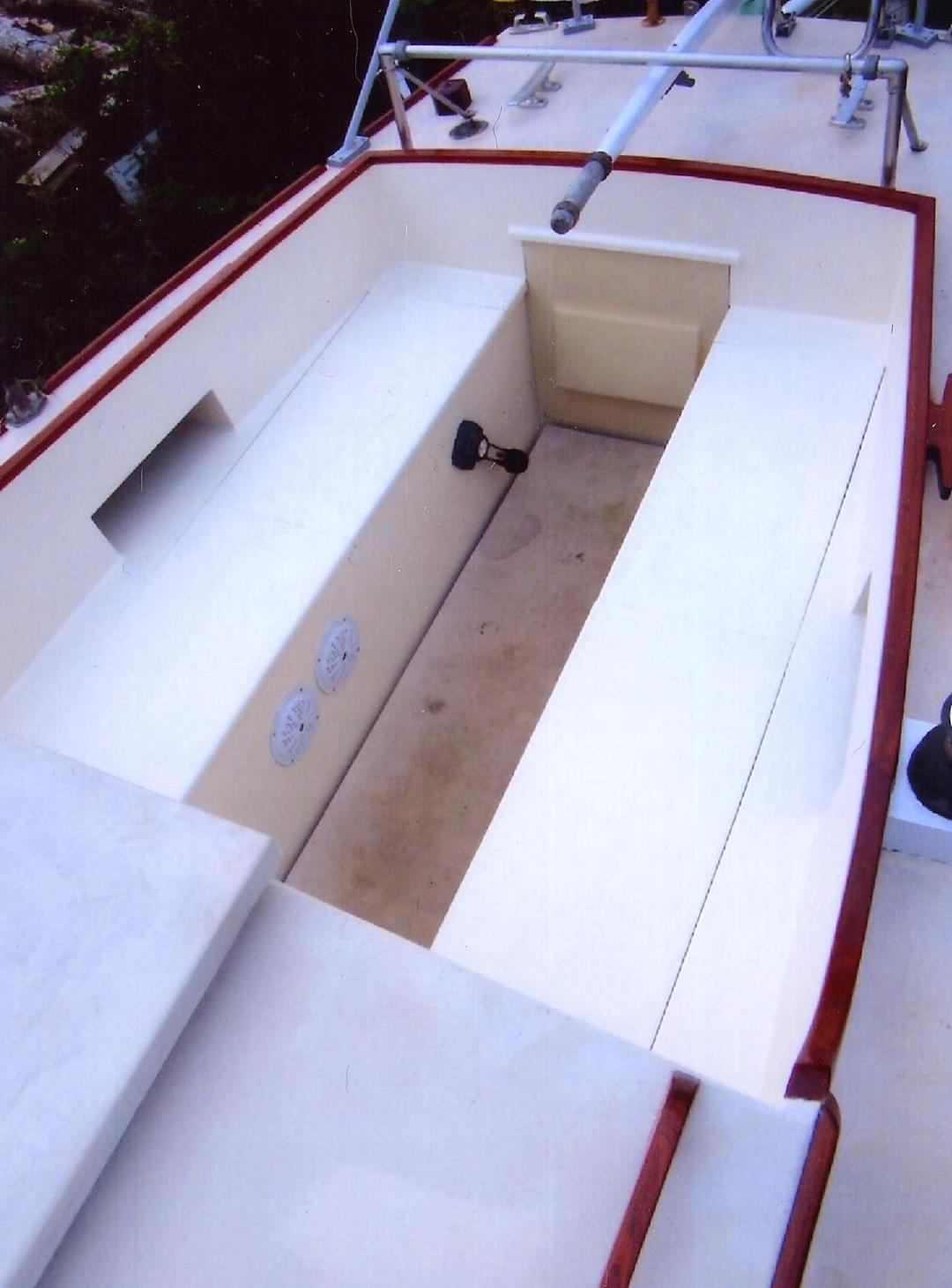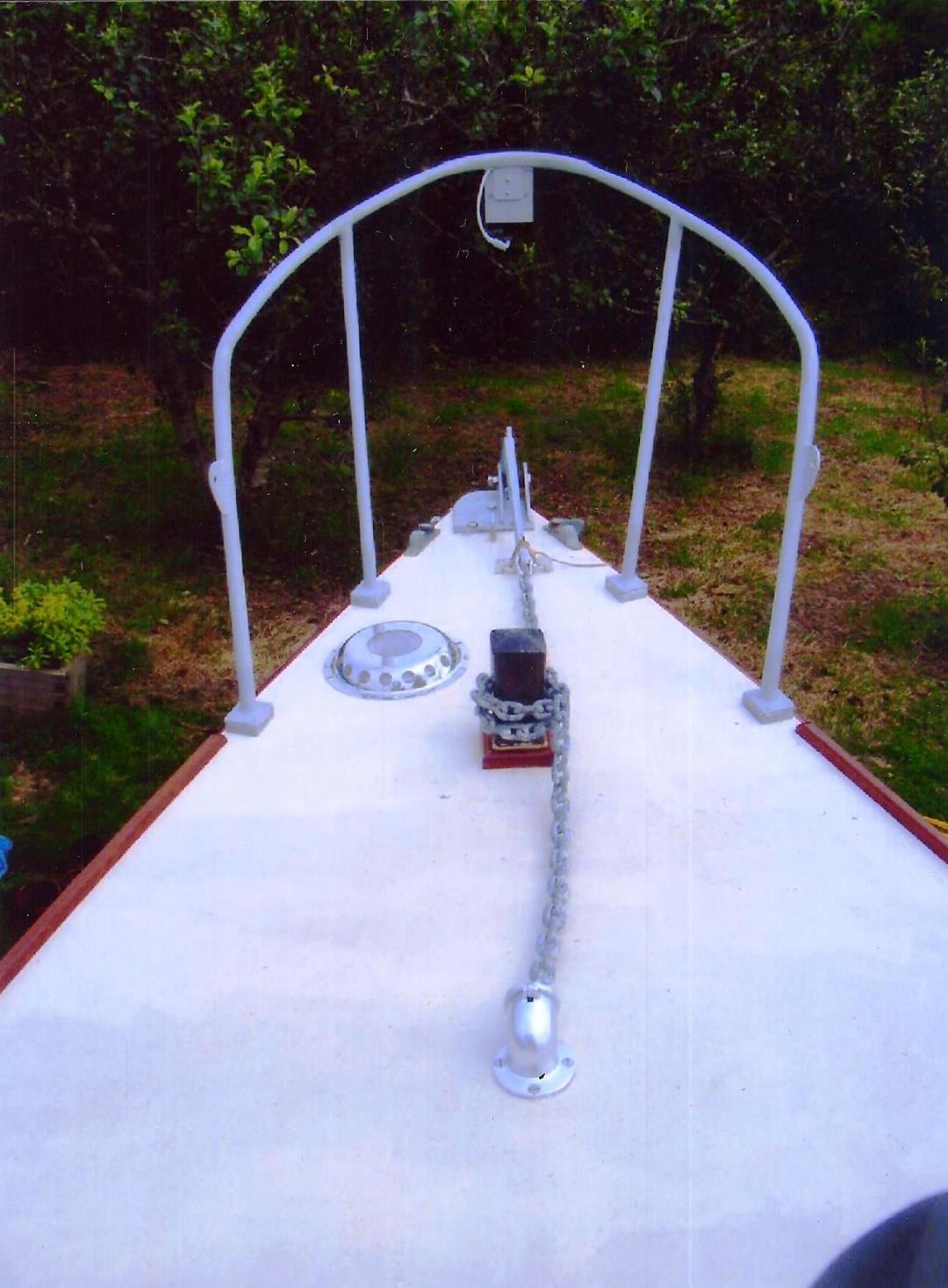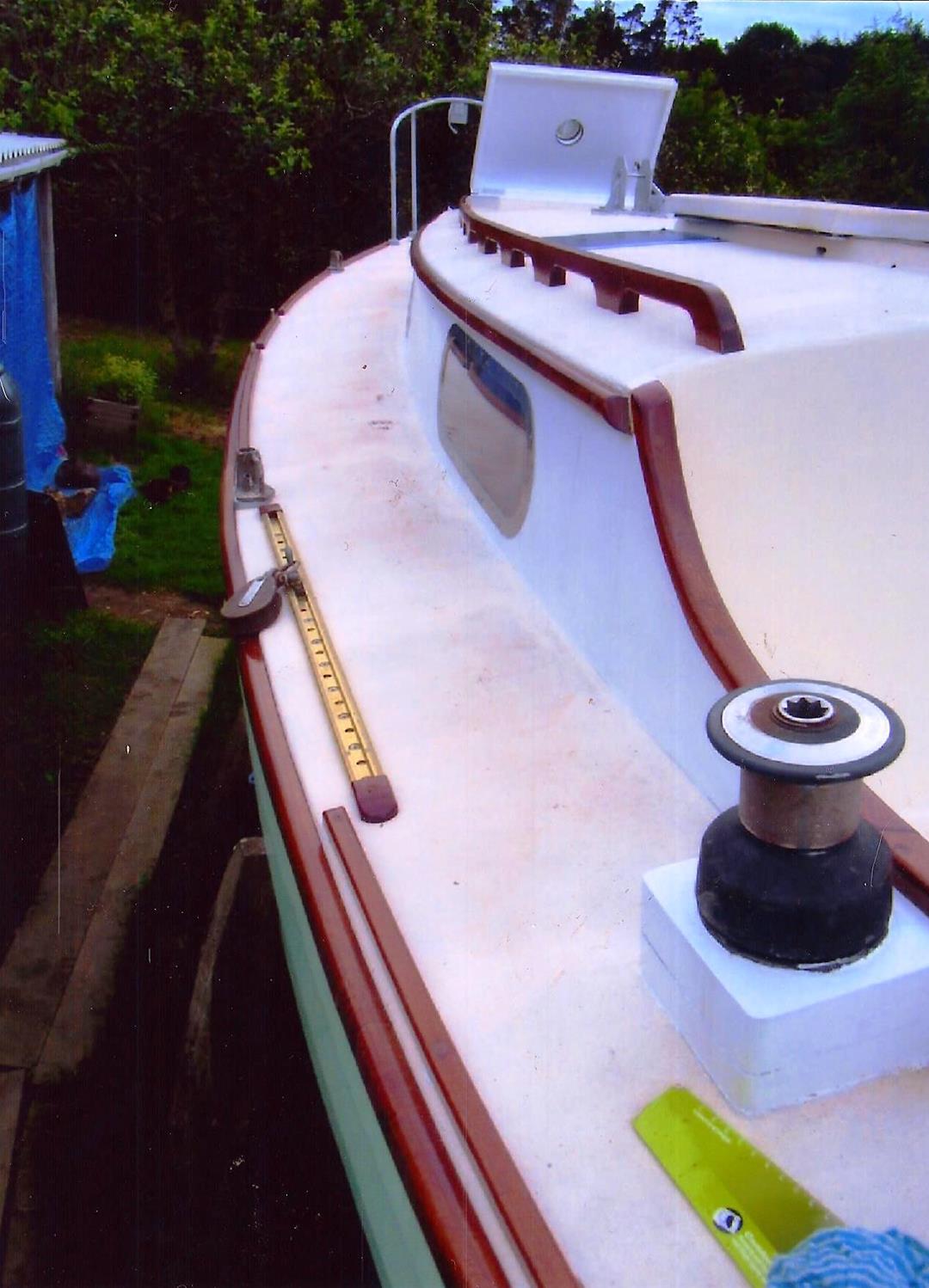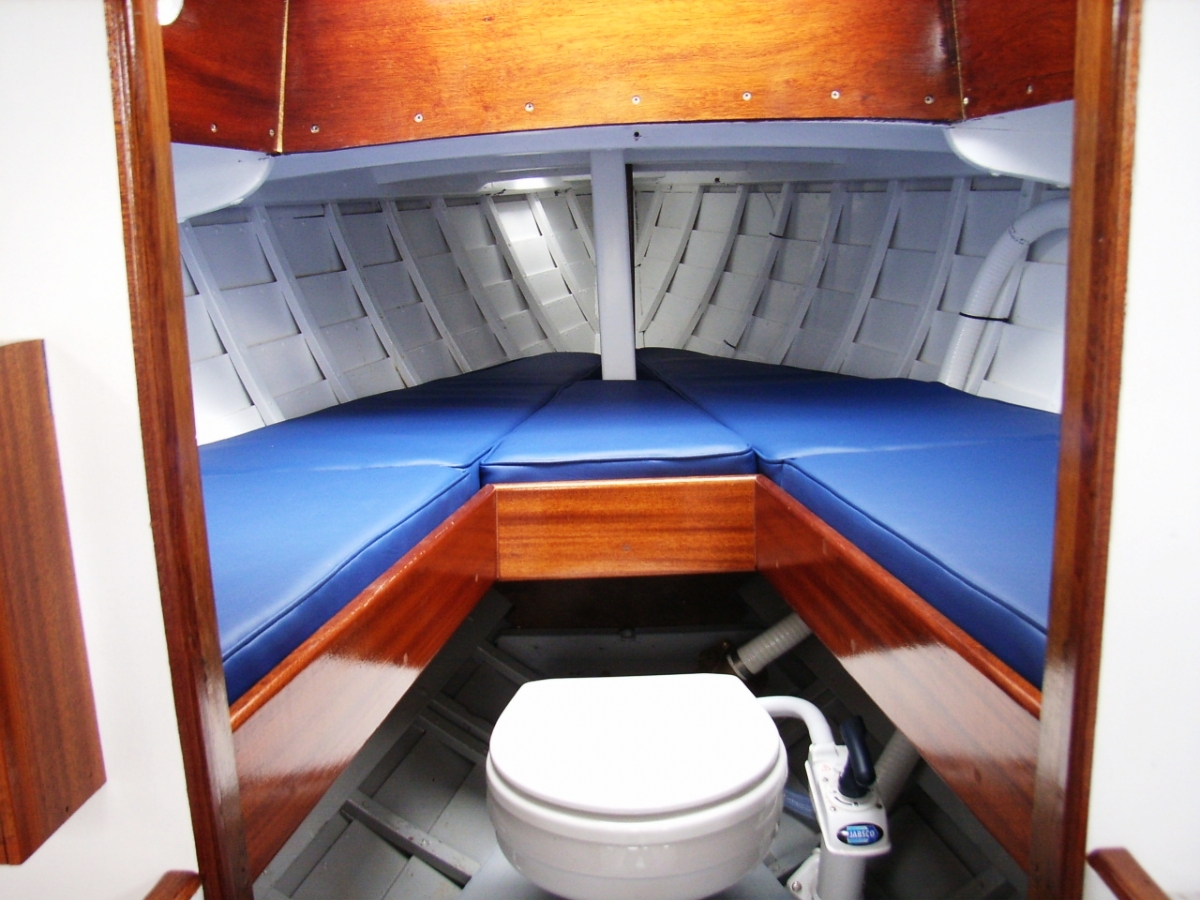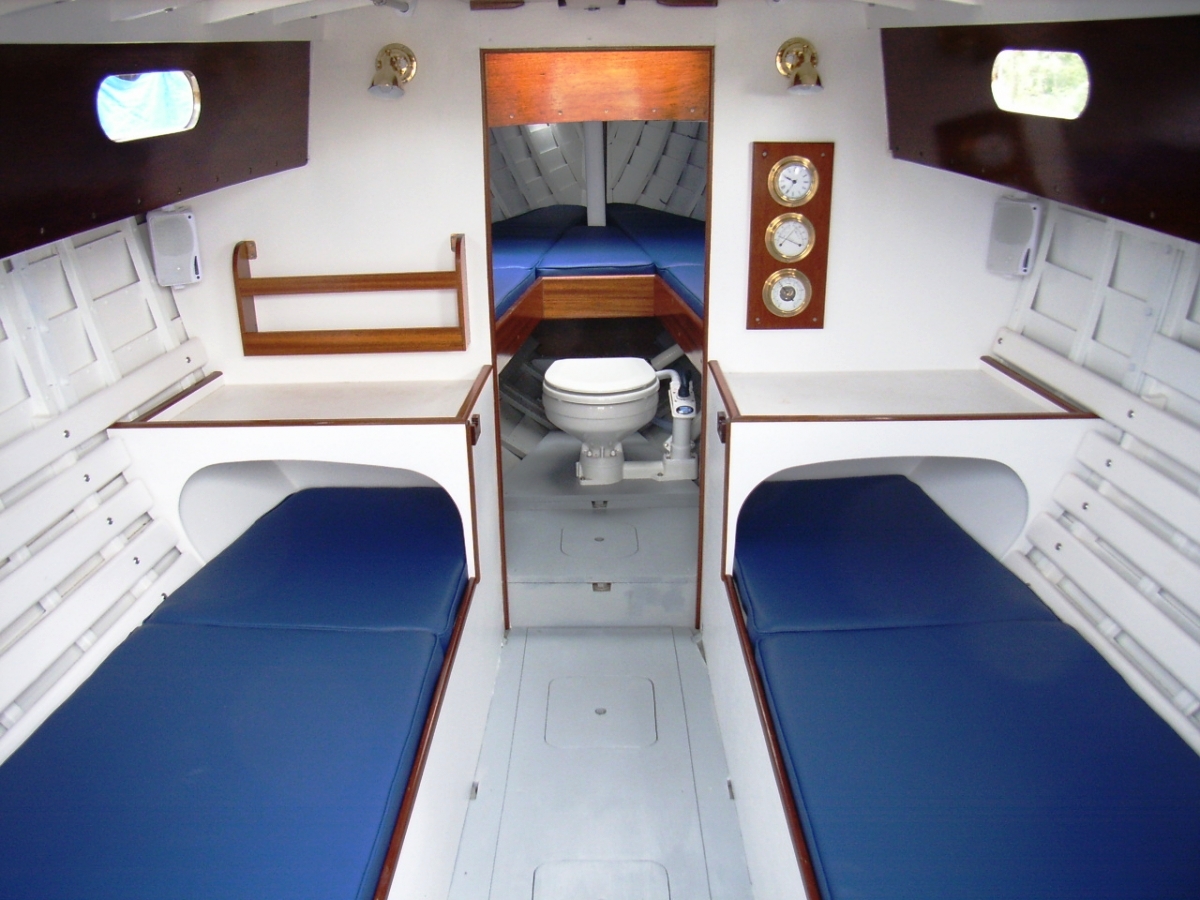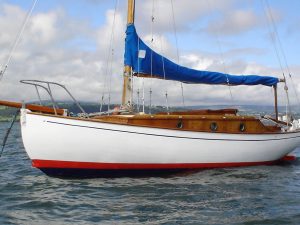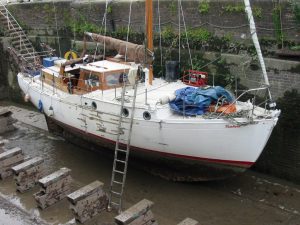HISTORY & DESCRIPTION:
Most classic boats begin life with a good story, and the Stella is no exception. Early in 1959 AE “Dickie’ Bird, the then Commodore of the East Coast’s Royal Corinthian Yacht Club, asked “Sonny’ Cole, of Tucker Brown’s yard at Burnham on Crouch, to come up with a cruiser racer along the lines of a Folkboat but slightly bigger and beamier so as to give greater initial stability, and with more spacious accommodation.
Quality was a must, but Bird wanted a straightforward approach to construction methods and no unnecessary frills. He insisted the price be kept low so that the yacht would appeal to enough Thames Estuary and East Coast sailors to establish a new racing class rapidly.
The next step was to commission a designer and CR “Kim’ Holman seemed the obvious choice. Although a comparative newcomer to the world of yacht design the 32-year-old had set up shop in partnership with Don Pye in West Mersea in the mid-Fifties his work was already making an impact in the area.
Holman quickly came up with a 20ft (6m) waterline, 25ft 9in (7.9m) LOA sloop that was based on the Folkboat but bore his own unmistakable imprint, giving the craft a character and beauty all her own. Clinker construction and a simple coachroof were to be important factors in keeping her affordable and the target price was to be £1,200, excluding sails. The yard set about building the first one, to be named La Vie en Rose after one of Bird’s former yachts.
However, the class still didn’t have a name. It was during a meeting in a pub between designer, builders and potential owner that Holman allegedly raised his pint, spotted the logo on a beermat and said: “Let’s call it the Stella Class.”
Apart from being a brew that is popularly known these days as “wife beater’, Stella is the Latin word for “star’ Ã and a star La Vie en Rose proved to be on her first competitive outing. She won all seven races at the 1959 Burnham Week, racing in the Handicap Cruiser Class B2. And, just to rub it in, Bird’s wife was at the helm for the ladies’ race and walked away with it.
The other competitors couldn’t believe it, so convincingly had the Stella swept the board, and they protested the handicap rating. But, no matter which way the committee cut the cake, it proved correct and the dispute merely served further to establish the yacht’s reputation. Perhaps, given that performance, today’s nickname should be “boat beater’.
Word spread rapidly and soon the Tucker and Brown yard was struggling to keep up with orders. Additional builders were sought to cope with the demand, and six supporting yards also began to build them. They were mainly based in East Anglia, but production also took place on the South Coast and the Clyde.
In all, 106 Stellas were built before production ceased in 1972. As well as success on the racing circuit, the Stella has established herself as an offshore cruiser. Her seakeeping abilities are legendary and good handling characteristics make the going easy on extended voyages.
The following is an extract from an account, which appears on the Stella Class Association’s website, of Duncan Fagg’s journey to the Mediterranean in the Stella Star Shell:
“An incredible sea surrounded us. Each steep-faced wave would come from behind then pick us up, Star Shell’s speed increasing as we tumbled down the wave’s face.”
“There was a sound of crashing water close to Star Shell’s stern. I turned to see a stretch of foaming, bubbling wave breaking above my head. I looked away from this test of the Stella’s seaworthiness. Then I looked back. Her buoyant transom had lifted before the wave and although the stern deck must have got a soaking, as did the hand that gripped the tiller, I did not and it had simply passed beneath us. Incredible.”
Convinced? I was and I couldn’t wait to get my hands on Estrella, the 1961-built Stella I was to sail from the Royal Harwich Yacht Club at Woolverstone on the banks of Suffolk’s River Orwell. As owner Will Patten waved me on board, I was struck by Estrella’s pristine condition, from her shiny clinker hull to the gleaming brightwork and quality deck gear.
“You’ll find that most Stella owners look after their boat,” Will told me, “you’d have a job to find an untidy one around here.”
The cockpit is deep, roomy and secure, with mahogany-topped seats opening onto lockers below and a front-opening lazarette beneath the aft deck. The main traveller traverses the cockpit a foot or so from the companionway.
Being a keen racing man, Will has opted for high-performance Harken winches and ancillary gear, and, with safety in mind, has led lines back to the cockpit via jamming clutches. All controls are within reach of the helm.
The side decks are wide and the safety lines high, providing a safe area on which to work.
Entry below is gained via a long, ribbed hatch cover that slides forward to provide unusually good all-around access to a Yanmar IGM10 diesel engine.
As for the saloon itself, I don’t think I’ve ever seen a less cluttered and airier environment. Where most Stellas will have lockers lining both sides of the cabin down to settee level, Will has extended the living area out to the sides of the hull. This results in two very wide and comfortable settee/berths and a wonderful feeling of space.
I saw also that two other clutter-prone items were missing: a toilet and a galley. Again, most Stellas have a galley to port or starboard of the companionway and a toilet forward. Is this to minimise weight because of racing, I asked? “Partly,” Will replied. “Less weight does mean more speed, but it’s not just that. I like simplicity. For a toilet, what’s wrong with a bucket? That’s how the early Stellas were built. As for a galley, a bowl serves as the sink and I use a butane-powered, single-ring stove for brewing up. When we’re cruising, we tend to eat in pubs.”
The absence of a toilet forward also allows room for a very generous double berth in the forepeak. The only concession Will has made in the way of extra equipment, other than for safety reasons, is an EberspÅ cher heating system. “Keeps us warm on winter cruises.”
We shoved off beneath a hazy, blue May sky and out into the Orwell. The wind was a benign 10 to 12 knots coming from the southwest. I took the helm to point her windward as Will fed the genoa into its luff groove and hoisted the main.
I noticed the main had no reefing points. “I never need to reef,” Will told me. “If it blows up, I simply flatten the sail hard and she’s happy. I’ve sailed her in 35 knots of wind under full main. No problem.” As we tacked downriver towards the sea, I was impressed by her mix of surefootedness, balance and responsiveness. She tacked on a sixpence, thanks to that cutaway forefoot, and accelerated quickly into a groove. She’d be round racing buoys like greased lightning. An absolute pleasure to sail on every point.
Stellas instil fierce loyalty and owners tend to take the appearance of their boat seriously. Driving the camera boat that day was Will’s wife, Susie, and a stream of instructions flowed across the water between us that would have done justice to the direction skills of Fellini.
“The luff on the main is a bit slack; could do with tightening.” She was right and Will complied. “You’ve got a line dragging in the water.” Right again. “Will, we want your face in the shot. Sit this side of the boat, look up at the main and smile!” Finally, she pronounced herself satisfied, saying: “Right, I think that’s a wrap,” and zoomed off back to the studio sorry, I mean yacht clubhouse.
The Stella’s beauty, sailing performance and space combine to produce a class that lives up to its reputation its average purchase price resulting in a classic that is more than worthy of consideration if you’re looking for an affordable classic.
ALCYONE, Stella No.17 was built by the well-respected yard of Cardnell Brothers on the East Coast for C J Tinson of Colchester in 1960. She was stationed in West Mersea during the 1960s. In the 1970s in Faversham in the new ownership of John Schwerdt of Lewes, Sussex.
Lapstrake mahogany planked hull, copper fastened to steam bent oak timbers. Marine-ply decks, epoxy glass-sheathed. Mahogany cabin coamings and cockpit and epoxy ply.
6.5hp YANMAR DIESEL ENGINE, 33-litre fuel capacity, three-blade propeller.
Two batteries. 12-volt electrics with 10w Spectra solar panel charging.
BERMUDIAN SLOOP RIG with deck stepped 32ft. Douglas Fir mast. Stainless steel rigging. Six terylene sail, various makers. Serviceable condition.
Four Berth accommodation in two cabins.
Galley to port quarter with Origo two burner cooker. 5 & 9-gallon fresh-water tanks.
INVENTORY:
- Cobra F75 VHF
- Auto Pilot
- Compass
- Nasa Sounder
- Bruce Anchor with 30m x 8mm chain
- Bathing Ladder
- Two bilge pumps
- Fenders & Warps
- New Marine WC
- New Upholstery
Contact us for a full list of work undertaken during the restoration. Owner supplied images.
GUIDE: Sold – July 2020
LYING: Pembrokeshire
VIEWING: Through the brokers – 01905-356482

